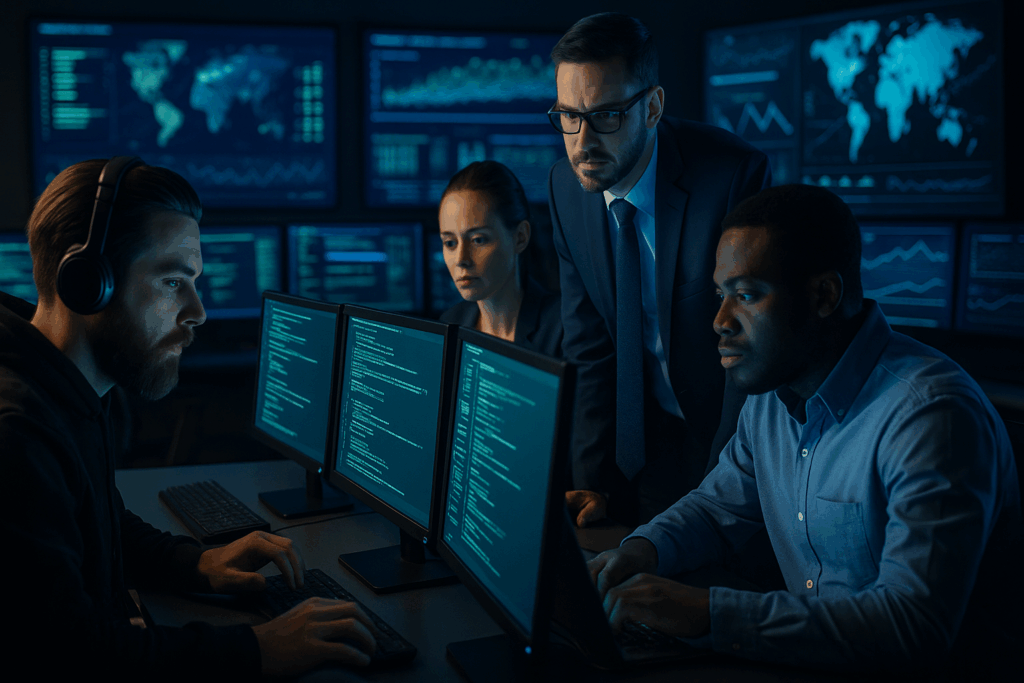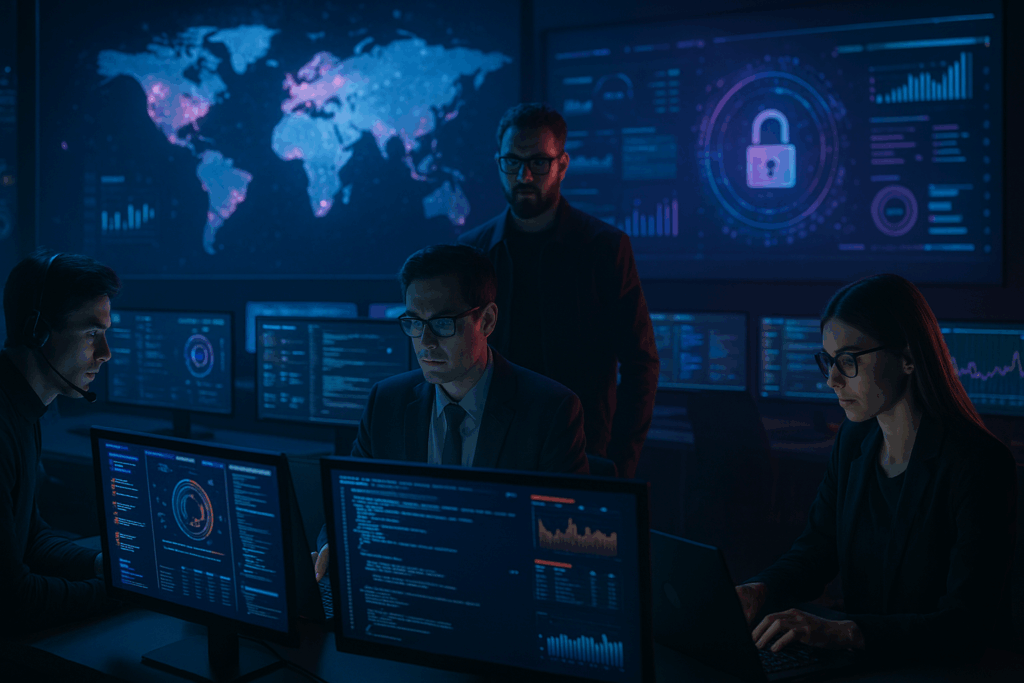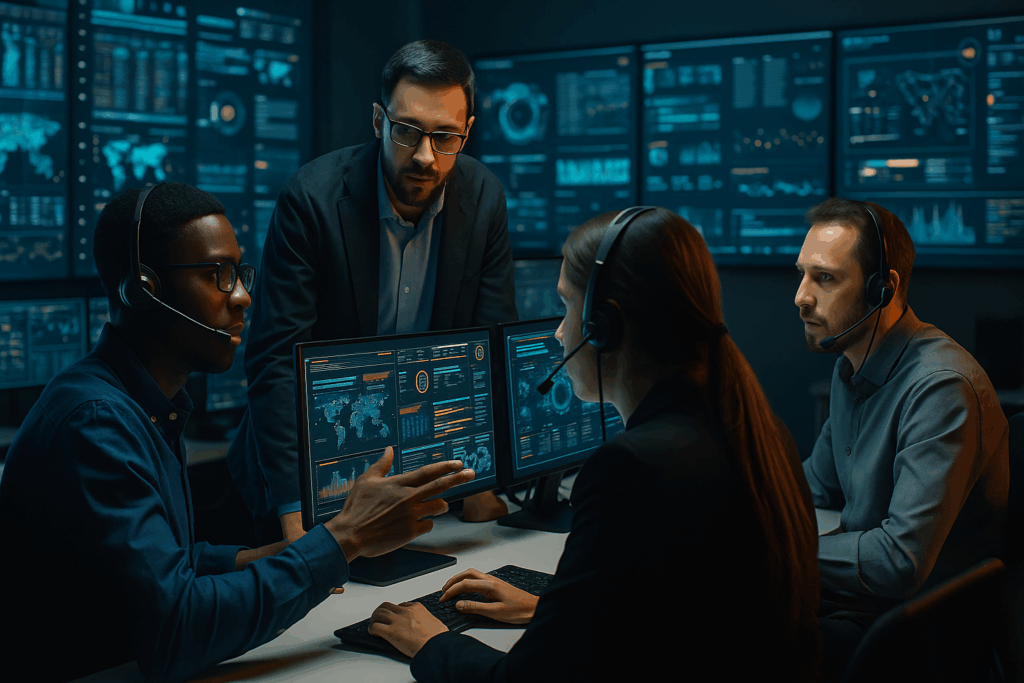A modern Security Operations Center (SOC) cannot operate in isolation. Its effectiveness relies not only on the technology and analysts it comprises but also on its integration with other organizational areas, particularly with the IT department. Cybersecurity is not a separate layer; it is transversal. It requires a deep understanding of the systems, networks, applications, policies, and procedures managed daily by IT. This interdependence becomes especially critical during incident response, threat containment, or the implementation of defensive measures.

From an operational standpoint, the SOC and IT maintain a continuous flow of communication. Level 1 analysts (L1), upon detecting alerts related to specific systems or assets, must quickly validate with IT whether the observed behavior is legitimate. For example, a port scan might be generated by a legitimate administrative tool or indicate lateral movement. In such cases, collaboration with IT is essential to reduce analysis time and avoid misclassification. This exchange typically occurs through structured channels such as ticketing systems, traceable email communications, corporate messaging platforms, or even SOAR platforms that automate validation requests.
When an incident is escalated to Level 2 (L2), coordination with IT becomes more intense. At this stage, corrective actions may be required, such as isolating machines, revoking credentials, restoring backups, or validating configuration changes. To execute these actions, the SOC must understand IT procedures, technical limitations, and maintenance windows. This makes joint playbooks essential, documents where both IT and Security agree on predefined actions for specific incident types, detailing who acts, when, and with which tools.
For Level 3 analysts (L3), who handle advanced or persistent threats, collaboration runs even deeper. L3 analysts may need access to forensic images of compromised systems, extended logs, database snapshots, or traffic captures from firewalls or load balancers, all typically managed by IT. In cloud or hybrid environments, they may also require temporary access to administration consoles or architectural insights that only IT personnel possess. The speed and precision of this coordination can determine whether the SOC stops data exfiltration in time or merely observes it once it’s too late.

From a governance perspective, SOC and IT teams often participate in regular coordination meetings, especially when their functions are organizationally distinct but operationally interdependent. In some models, the SOC is part of the IT department; in others, it reports to corporate security or compliance. Regardless of structure, operational cooperation is vital and supported by mechanisms such as:
- Reviewing planned changes (Change Management), allowing the SOC to anticipate false positives or changes in log visibility.
- Shared vulnerability management, where IT evaluates and applies patches recommended by the SOC following security scans.
- Onboarding of new services, where IT provides the architecture and the SOC defines required telemetry sources for monitoring.
- Automation of repetitive tasks via shared tools or scripts (e.g., blocking IPs on firewalls managed by IT following SOC decisions).
One of the most significant challenges in this relationship is the alignment of priorities. IT typically focuses on availability, stability, and service continuity, while the SOC prioritizes risk containment. These priorities can conflict during an incident. For example, the SOC may require immediate server isolation, while IT worries about the operational impact. To avoid deadlock or unilateral decisions, it’s critical to have a clearly defined chain of command, an Incident Response Committee, and pre-approved procedures.
Coordination between SOC and IT also extends to strategic initiatives. Defining Zero Trust architectures, deploying EDR solutions, or migrating to cloud environments all require Security and IT to collaborate from the outset. In these scenarios, each project should include a responsibility matrix outlining which team leads each phase, who validates each component, and which joint KPIs will be used to measure success.

In mature organizations, this relationship goes beyond technical tasks. It is also driven by cross-training and awareness initiatives. IT staff must understand cybersecurity fundamentals, and SOC analysts must grasp the operational context of IT decisions. This convergence is particularly valuable in managing insider threats, where the SOC’s visibility and IT’s contextual knowledge are both critical.
No matter how powerful, a SOC is ineffective if it lacks a direct line to the teams managing the infrastructure it protects. Therefore, coordination with IT is not a nice-to-have, it is a structural requirement for an effective, contextualized, and adaptive defense. Security must not hinder operations, but it cannot lag behind them either. Only a tactical balance between both domains enables an organization to anticipate threats and respond with surgical precision.
